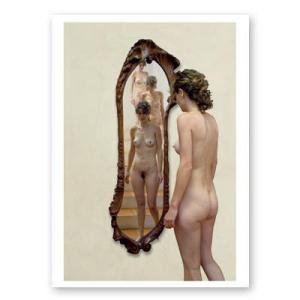I had a lovely time visiting London this week. Like New York it is a place that makes me feel good just by being there, walking around! This time I went to The National Gallery to see the Richard Hamilton exhibition before it closed.
Richard Hamilton is one of the first artists to describe what he was doing as Pop Art a long time before Andy Warhol started using the term. His iconic picture from 1957 is called “Just what is it that makes today’s homes so different, so appealing?“

Here is his potential manifesto for Pop Art written in January 1957:
“16th January 1957
Dear Peter and Alison,
I have been thinking about our conversation of the other evening and thought that it might be a good idea to get something on paper, as much to sort it out for myself as to put a point of view to you.
There have been a number of manifestations in the post-war years in London which I would select as important and which have a bearing on what I take to be an objective:
Parallel of Life and Art
(investigation into an imagery of general value)
Man, Machine and Motion
(investigation into a particular technological imagery)
Reyner Banham’s research on automobile styling
Ad image research (Paolozzi, Smithson, McHale)
Independent Group discussion on Pop Art – Fine Art relationship
House of the Future
(conversion of Pop Art attitudes in industrial design to scale of domestic architecture)
This is Tomorrow
Group 2 presentation of Pop Art and perception material attempted impersonal treatment. Group 6 presentation of human needs in terms of a strong personal idiom.
Looking at this list is is clear that the Pop Art/Technology background emerges as the important feature.
The disadvantage (as well as the great virtue) of the TIT show was its incoherence and obscurity of language.
My view is that another show should be as highly disciplined and unified in conception as this one was chaotic. Is it possible that the participants could relinquish their existing personal solutions and try to bring about some new formal conception complying with a strict, mutually agreed programme?
Suppose we were to start with the objective of providing a unique solution to the specific requirement of a domestic environment e.g. some kind of shelter, some kind of equipment, some kind of art. This solution could then be formulated and rated on the basis of compliance with a table of characteristics of Pop Art.
Pop Art is:
Popular (designed for a mass audience)
Transient (short-term solution)
Expendable (easily-forgotten)
Low cost
Mass produced
Young (aimed at youth)
Witty
Sexy
Gimmicky
Glamorous
Big Business
This is just a beginning. Perhaps the first part of our task is the analysis of Pop Art and the production of a table. I find I am not yet sure about the “sincerity” of Pop Art. It is not a characteristic of all but it is of some – at least, a pseudo-sincerity is. Maybe we have to subdivide Pop Art into its various categories and decide into which category each of the subdivisions of our project fits. What do you think?
Yours,
(The letter was unanswered but I used the suggestion made in it as the theoretical basis for a painting called Hommage á Chrylsler Corp., the first product of a slowly contrived programme. R.H.)”(Collected Words 1953-1982)
The exhibition for the Late Works was in preparation before Hamilton died on 13th September 2011. It seems odd to have such contemporary images in the conservative National Gallery but it is based on his studies of works that are in there. There is a particular interest in Renaissance perspective. There are also allusions to work by his hero Marcel Duchamp.
I found the exhibition very interesting although I know some others were disappointed. I am most impressed that right into old age Hamilton was still experimenting and using computers and Photoshop to create his images. I was particularly impressed by the culmination of the exhibition Le chef-d’oeuvre inconnu in which three great painters contemplate a reclining nude. This is very evocative and emotional.





Yes, I am very impressed by these pictures and would recommend this exhibition if it moves somewhere else although I think it was particularly curated for the National Gallery with it’s many references to pictures in it’s collection and the building itself.

Leave a Reply